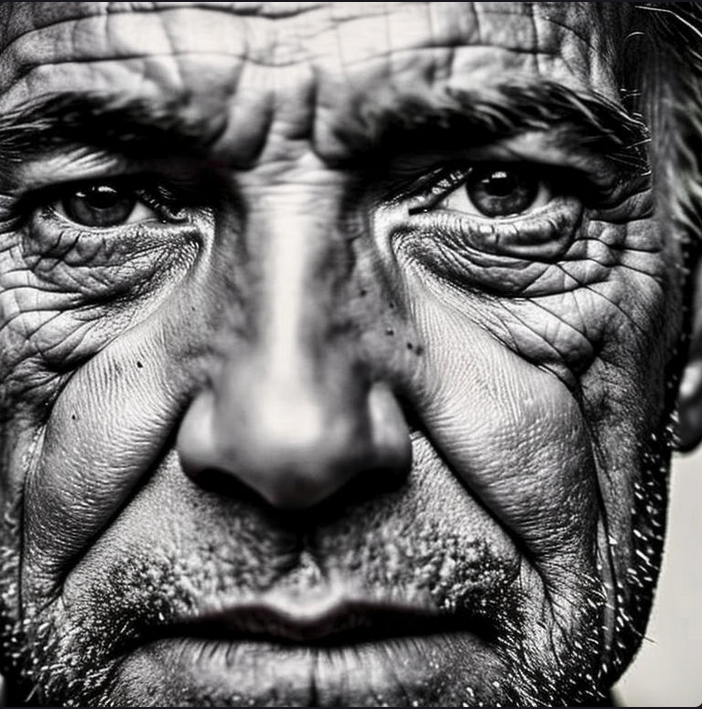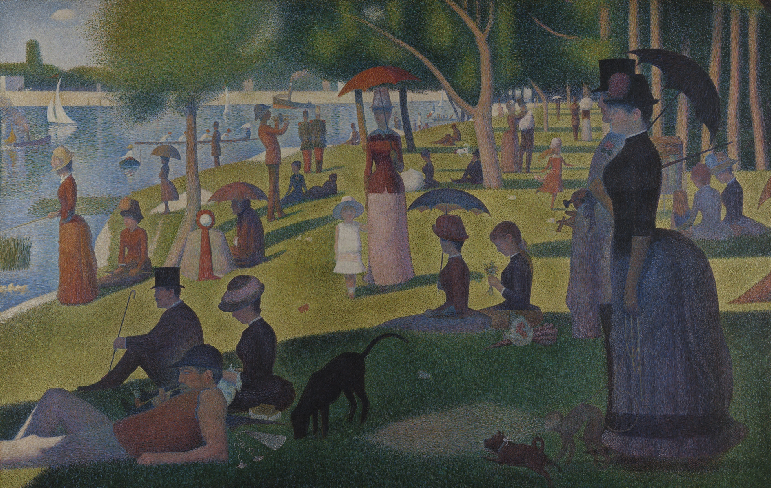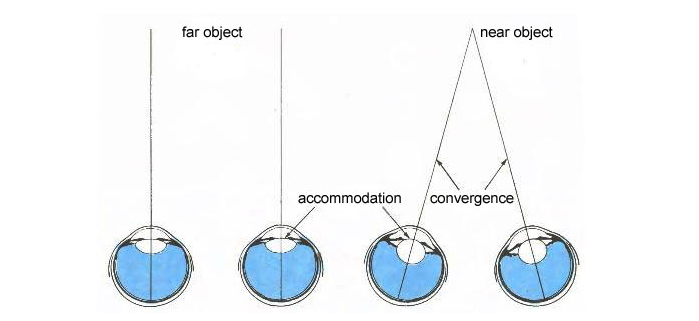Monocular Cues in Depth Perception
Modified: 2024-06-11 2:15 PM CDST
Another set of depth cues is available to us with just one eye. (If
you have two eyes, the monocular cues still work.) These cues are
less powerful than retinal disparity, but they still provide us with
solid depth-perception information.
- Linear perspective is the monocular cue provided by the
convergence of lines toward a single point of the horizon.
- Looking
down a set of railroad tracks is a good example.

- We know that the
tracks do not converge; they are parallel throughout, but when we
look down the tracks, it appears that they converge to a single
point.
- Renaissance artists discovered that they could reproduce this
phenomenon on a two-dimensional canvas. Artists have been using that
representation since, and "primitive art" is often described as art
that does not use perspective.
- Texture is the monocular cue provided by our proximity to
an object.
- The closer one is to something, the more detail or texture
one can see.
- For example, if I look at a wall from 20 feet away, it
will look fairly smooth.
- But, as I approach the wall, I begin to see
more and more detail or texture.
- When I am right up against the wall,
I can see things that I could not see before when I was further away.
- That correlation between distance and texture is interpreted as a
distance cue.
- Look at Annie Liebovitz's "middle aged man" (below) notice how her sharp focus makes his face appear close to you

- Haze is similar to texture, but is broader.
- Linear perspective acts as a depth cue over long distances when we are
outside.
- The same scene will provide quite different perceptual
experiences depending on the presence or absence of haze.
- For
example, you rent a condominium in Colorado, and you look out from
your porch at the mountains.
- On a clear day (no haze), the mountains
seem so close that you can touch them.
- Naively, you might even
suggest that you walk to the mountain.
- But you are told it is 75
miles away.
- Had you first looked at the mountain on a hazy day, it
would not have seemed so close.
- Below is Denali in Alaska on a clear day. It is further away than it seems.
- On a hazy day, it will appear to be closer.

Denali in the fog, looks closer.

- Interposition is a depth cue derived from the overlapping
position of objects.
- Objects that are in front of other objects may
partially block our view of the rearmost object.
- Because we know what
the object should look like, and because we see only part of it, we
interpret the obstructed object as being farther away.
- Which of the pyramids below is the closest? Which is the furthest?

- Relative size is another interesting monocular cue.
- Our
learning contributes heavily to this cue.
- Over the years, we have
learned that objects on our planet change size slowly, if at all.
- In
other words, it is not the case that people shrink to half their
size, or double their size in an eye blink.
- They do not. If they did,
we would not be able to tell whether they were shrinking or moving
away, or whether they were growing or coming closer.
- But, we do not
have that problem.
- Instead, when the image of an object gets larger
on the retina, we interpret that as a distance cue (closer).
- Conversely, when the image on the retina gets smaller, we interpret
that as the object becoming farther away.
- So, if we are in a tall
building looking down at some people, we do not say,
- "Look at those
teensy people just outside the window."
- Rather, we say, "Look at
those normal-sized people far away."
- Our knowledge of the world,
then, dictates our perceptions.
- Look Seurat's Sunday Afternoon at the Grand Jatte. See how you see people close and far away. You don't see big people and little people at the same distance from you, do you?

- Accommodation and Convergence occurs with both eyes, but are still a
monocular cues.
- Accommodation refers to the feedback we receive from
the muscles in the eye that cause the lens to bulge or get thinner.
- Remember that as we focus on distant objects, our lens is made
thinner, and as we focus on near objects, our lens is made thicker.
- Try the following:
- Hold a pencil in front of you at arm's length,
cover one eye with your other hand.
- Now, gradually bring the pencil
closer to your uncovered eye.
- You will find a point about a foot or
less away from your eye where you can feel those eye muscles strain.
- Move your pencil back and forth within a six-inch distance.
- Can you
feel the muscles working?
- That is accommodation and you have learned,
perhaps unknowingly, to use it as a depth perception cue.
- Convergence: another muscular strain.
- Technically, convergence is a binocular cue because both eyes are involved.
- I have listed it here, as well in the page for binocular cues.
- This time the strain is in the muscles that rotate the eyeballs toward your nose as the pencil approaches.
- Look at the diagram below to see the two sets of muscles involved.

Back to Chapter 4 Lectures







